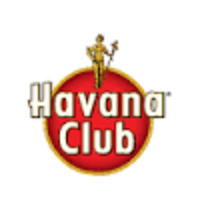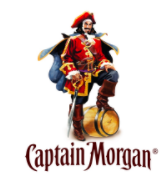Summary
to understand this market
Detailed content
 Inforamtion
Inforamtion
- Number of pages : 30 pages
- Format : Digital and PDF versions
- Last update : 20/07/2020
 Summary and extracts
Summary and extracts
1 Market summary
1.1 Presentation
Rum is a brandy originating in the Americas, produced from sugar cane by means of a thourough production process.
The global rum market is dominated by spirits giants including Diageo, Pernod Ricard, and Bacardi. Tanduay, Captain Morgan, Havana Club, and Bacardi are the four prevailing brands worldwide. The global market for rum is estimated to increase in both sales value and volume, driven mainly by innovations in marketing.
Domestically, Germany's consumption of rum is decreasing in terms of volumes sold. Nevertheless, premiumization could give the market a boost. Similar to the global market, Germany's sales is mostly divided between the aforementioned global giants. Nevertheless, the country does have local production in the likes of Senft, Asmussen, Simon's, Pott, Haas, etc.
Millennials are an important group in the consumption of rum in Germany.
Finally, in this report we evaluate what effect COVID-19 will have on the industry.
1.2 The global market is growing
Source: ****
In ****, the global consumption of rhum amounted to *.** billion liters sold. Between **** and **** the market grew at a CAGR of *.*%. This positive growth is projected to continue, albeit at a slightly lower rate of *.*%. Ultimately, volumes sold in **** is estimated at *.** billion. In other words, consumption of rhum globally will ...
1.3 The domestic market's decline
Source: ****
In Germany, the amount of rhum sold has been decreasing since ****. Between then and ****, the market shrunk at a CAGR of *.*% in volume sales. In this year, the market value was €*,***.** million. [***] This negative trend is expected to continue until **** where it will ultimately reach **.* million liters sold. This represents ...
1.4 International Trade
In this section we consider data from UN Comtrade to analyse Germany's trade with rum. In partcular, we use the following code: ****** – Rum and Tafia.
Source: ****
Germany imports more rum than it produces and exports; in **** the coverage rate (***) was **.*%. However, in ****, it decreased drastically to **.*%. The reason for this was ...
2 Demand analysis
2.1 Profile Analysis: The German Consumer
Source: ****
In a study conducted in ****, results showed that rum was the **th most popular drink in Germany. For illustrative purposes we have excluded some liquids from the list. The conclusion we can draw is that, in comparison to other beverages, rum remains relatively insignificant in terms of consumption and ...
2.2 Demand Trends
Cyclicality is high
Source: ****
The graph above represents the proportion of searches for a given term in a given region during a specified amount of time, compared to when it was the most searched (***). Thus, a value of ** means that the keyword has been used less often in the region concerned, ...
2.3 COVID-19's impact on the industry
Effect on German economy
In order to estimate the effect on the rum industry in Germany, it is necessary to zoom in on a handful of economic indicators. GDP remains a vital measure in order to understand the health of the economy and ultimately the spending on alcoholic beverages, including ...
3 Market structure
3.1 Market Overview
The supply chain of rhum production and distribution is vast, and includes many actors and steps before the end product reaches the consumer. Below follows an overview:
The first actors in this sector are farmers or agricultural cooperatives as well as distillers (***); The brandy and spirits manufacturers then carry out the ...
3.2 Production
Rum made from the distillation of cane juice (***) can generally be distinguished from those made from molasses. In general, cane juice, which is obtained by grinding sugar cane, deteriorates fast and the producer must ferment it quickly and then distil it.
Molasses is a thick and viscous syrup made from the ...
3.3 Distribution
There are two wide distinguishments one can make with respect to distribution:
Business to Business (***); production and manufacturing take place in a company, which in a later stage, once the product is complete, sells it to retailers who in turn distribute it to the final customer. Business to Consumer (***); production and ...
4 Analysis of the offer
4.1 Product Overview
First phases
The production of rum starts at the very root of its main raw material: the sugarcane grass. Although rum can be distinguished in two varieties on the basis of the ingredient, the initial journey is the same for both. The sugarcane is harvested by hand and consequently crushed by ...
4.2 Price Analysis
Price index
Source: ****
The line chart above depicts the evolution of prices for spirits in Germany. The base year is *** in ****; a value of *** means that, on average, prices have increased by *% (***) since ****.
Following this logic, we find that prices on spirits in Germany increased by *.*% between **** and ****. Since inflation remains ...
5 Rules and regulations
5.1 Current Regulation
For the production of spirits, EU countries are subject to the (***) N. ***/****, which gives specificities on the ingredients of rum, the labelling and the geographical origins.
In **** this regulation was updated. The most relevant innovation was that rum may be sweetened to a maximum of ** gr. of sweetening per liter.
Generally, ...
6 Positioning of the actors
6.1 Segmentation
- Bacardi
- Havana Club (Pernod Ricard)
- Captain Morgan (Groupe Diageo)
- Asmussen
- Simon's
 List of charts
List of charts
- Taille du marché du rhum (volume)
- Taille du marché du rhum (valeur)
- Consommation d'alcool par personne
- Indice des prix des spiritueux
- Part de spiritueux dans l'approvisionnement des supermarchés
All our studies are available online in PDF format
Take a look at an example of our research on another market!
Latest news
Companies quoted in this study
This study contains a complete overview of the companies in the market, with the latest figures and news for each company. :
 Choosing this study means :
Choosing this study means :
Access to more than 35 hours of work
Our studies are the result of over 35 hours of research and analysis. Using our studies allows you to devote more time and added value to your projects.
Benefit from 6 years' experience and over 1,500 industry reports already produced
Our expertise enables us to produce comprehensive studies in all sectors, including niche and emerging markets.
Our know-how and methodology enable us to produce reports that offer unique value for money.
Access to several thousand articles and paid-for data
Businesscoot has access to all the paid economic press as well as exclusive databases to carry out its market research (over 30,000 articles and private sources).
To enhance our research, our analysts also use web indicators (semrush, trends, etc.) to identify market trends and company strategies. (Consult our paying sources)
Guaranteed support after your purchase
A team dedicated to after-sales service, to guarantee you a high level of satisfaction. +44 238 097 0676
A digital format designed for our users
Not only do you have access to a PDF, but also to a digital version designed for our customers. This version gives you access to sources, data in Excel format and graphics. The content of the study can therefore be easily retrieved and adapted for your specific needs.
 Our offers :
Our offers :
the rum market | Germany
- What are the figures on the size and growth of the market?
- What is driving the growth of the market and its evolution?
- What is the positioning of companies in the value chain?
- Data from several dozen databases
5 reports pack (-15%) DE Germany
- 5 reports at €75.6 excluding VAT per study to choose from our German catalogue for 12 months
- Save 15% on additional studies purchased
- Choose to be refunded any unused credit at the end of the 12-month period (duration of the pack)
See the terms and conditions of the pack and the refund of unused credit.





 How Bacardi slips St. Germain into a spritz - 28/09/2023
How Bacardi slips St. Germain into a spritz - 28/09/2023
















